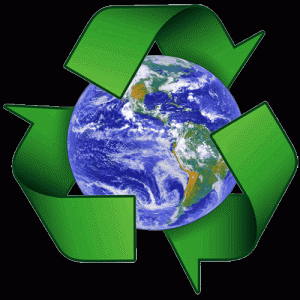 A perfect example of this is a replacement cardboard compactor that was recently installed at the Rush Rhees Library loading dock. Since its installation, the measurable weight of recyclables in this area has increased by approximately ½ ton per week and the amount of waste has reduced by about the same amount. This accounts for a savings of an additional 17 mature trees, 7,000 gallons of water, 3 cubic yards of landfill space, two barrels of oil, and 4,100 kilowatt hours of electricity every two weeks! (EPA) A special thanks to Mike Doge of Waste Management, who was instrumental in facilitating this request for the University. The new compactor has been a win-win situation in that it has increased recyclables, reduced waste and associated costs, and has resulted in fewer mechanical problems.
A perfect example of this is a replacement cardboard compactor that was recently installed at the Rush Rhees Library loading dock. Since its installation, the measurable weight of recyclables in this area has increased by approximately ½ ton per week and the amount of waste has reduced by about the same amount. This accounts for a savings of an additional 17 mature trees, 7,000 gallons of water, 3 cubic yards of landfill space, two barrels of oil, and 4,100 kilowatt hours of electricity every two weeks! (EPA) A special thanks to Mike Doge of Waste Management, who was instrumental in facilitating this request for the University. The new compactor has been a win-win situation in that it has increased recyclables, reduced waste and associated costs, and has resulted in fewer mechanical problems.
So, what can we do in our offices to make a difference? One idea is to follow the lead of Joanne Conlon, UF&S Finance and Human Resources, with this simple but genius tip. Joanne has designated a paper tray in the copy room of the UFC building for coworkers to place their unwanted scrap paper that does not contain confidential information. She then turns the scrap paper into note pads for everyone to use by simply cutting up the paper and clipping the pieces together with small binder clips. Joanne even agreed to send some of UFC’s scrap paper to Dawn Patanella of the Neonatal Intensive Care Unit of Galisano Children’s Hospital, who is also making scratch pads too. Reusing paper before it is recycled not only saves our natural resources but it can reduce the cost of purchasing notepads and post-its. You can use this same concept at your desk or at home. Before you toss your paper into your recycle bin, use it to jot down some notes or your grocery list.
Remember, you can place all of these items in your blue recycling bin for paper and cardboard:
newspapers, magazines, and catalogs
includes: advertisements and inserts
office paper
includes: white and colored copy paper, stapled / paper-clipped documents, computer paper (track-fed or free sheet), fax paper, glossy paper, card stock, craft paper, receipts
mail and envelopes
includes: junk mail, window envelopes, letters and memos, brochures and pamphlets
office supplies
includes: manila / file folders, spiral notebooks, glued notebooks and notepads, post-it notes, carbonless forms
flattened cardboard boxes
includes: clean empty pizza boxes; office paper boxes; cereal, pasta, crackers, tissue, shoe, gift, etc.
telephone directories
shredded paper (strip shredded only)
books
includes: all hard- and soft-covered books
